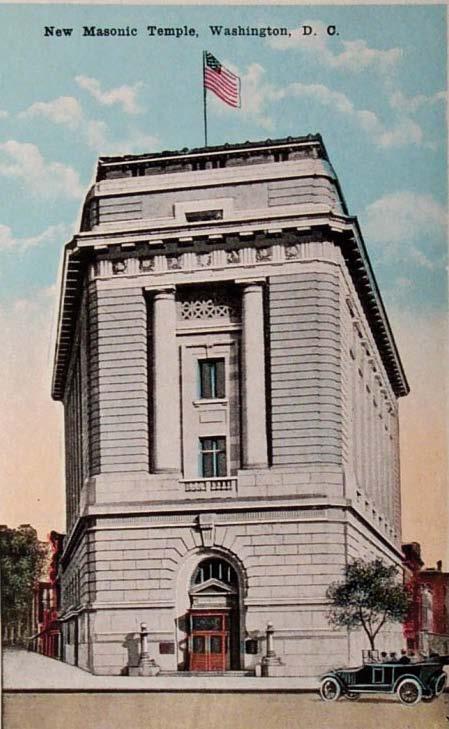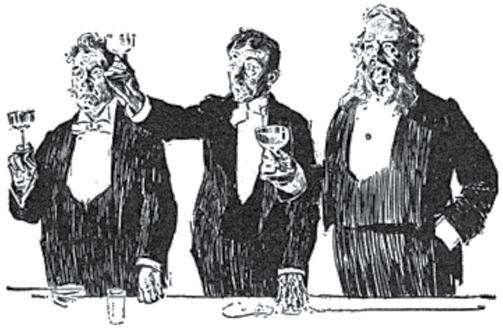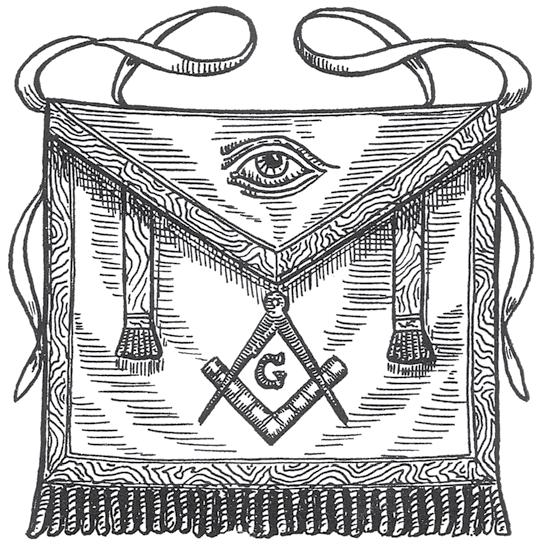
6 minute read
A Brief History and Philosophy of the Scottish Rite
Editor’s Note: In 2008, La France Lodge No. 93, a constituent lodge of this grand jurisdiction, was granted approval by the Grand Lodge to use the Scottish Rite ritual in its conferral of the three “Blue Lodge” degrees. After much effort and preparation, the brethren of La France Lodge will begin using that ritual this spring.
Andre Salmon, PM
La France Lodge No. 93
Introduction
The first three degrees summarize the major differences that exist between the Ancient and Accepted Scottish Rite (AASR) and the English Rites: Exhortations emphasize the universality of Freemasonry and there is no chaplain among lodge officers to avoid any confusion whatsoever with religion. The questioning under the blindfold, the chain of union, the embrace and triple kiss of the candidate’s “godfather”, repeated references to peace, love, joy, hearts, affections, kindest virtues and the red rose given to the new initiate, to be offered to the woman he esteems most, create more affective feelings. Manually drawing the tracing board of each degree, the bitter cup, the four purifying ordeals, the use of swords, the mirror and the perjurer’s corpse constitute a more sensorial approach triggering a more emotional state of mind conducive to a more mystical disposition. The use of swords also gives the whole Rite a definite chivalric flavor. The other differences relating to the principal officers, the steps, the tools, the ruffians’ blows, the winding staircase and middle chamber in the Third Degree and “M.B.” meaning the “Father’s Son” or “New Life” significantly modify the symbolism of the ritual.

The history of the AASR accounts for these differences originating from the specific cultural environments in which the English and Scottish Rites were developed. The English Rites were established in a predominantly English Protestant culture with a more austere moral and social inspiration derived from the “Old Testament”, whereas the Scottish Rite was developed in predominantly Catholic France, inspired by the more affective and mystical message of the “Gospel”.
History of the AASR The origin of Speculative Masonry is to be found in the medieval Scottish operative Masonic labor guilds. These early regulations are the “Old Charges” of operative stonemasons described in the Regius Manuscript of 1390 and William Shaw’s Statutes of 1598 and 1599. According to these documents, candidates were admitted during simple initiation ceremonies including a brief legendary history of the Craft, the articles uniting all Masons, their duties, prayers, esoteric modes of recognition and their obligation to keep this instruction secret.
Scottish Freemasonry started moving to England in the 1640’s and the great fire of London in 1666 brought many more craftsmen from Ireland and Scotland to help with the reconstruction of the city. They are likely to have shared their legends and primitive Masonic rituals and catechisms.
As the construction of religious buildings, castles and mansions was still going on in Scotland and Ireland, but was disappearing in Europe and England, the operative stonemasons’ lodges progressively began to “accept” non-operative speculative Masons. Speculative Masonry, at its creation, is likely to have been somewhat deprived of substance as it was influenced by the playful societies of 18th century England, meeting in taverns where talking, dining, cardplaying and even gambling prevailed over knowledge
and spirituality. It was fortunately improved by the intelRamsay is known to have been actively involved in lectual enlightenment of such institutions as the “Royal “high” degree rituals from 1730 to 1738. Ramsay’s “OraSociety” and the spiritual inspiration of esoteric philosotion” offered the doctrinal base and original plan for the phies such as that of Rosicrucian societies. renovation of French Freemasonry and may be considBlue Lodge Masonry was slow to take its full shape. The above-mentioned manuscripts included only two degrees, Apprentice and “Fellow of the Craft”. The ered as the first informal Constitution of what would become the Scottish Rite in France at a time when Masonry started spreading over Europe. best senior Fellows became Masters mainly in charge of Many lodges came to be founded by followers of the administration and supervision of the work and morality. Scottish Catholic Stuart Dynasty who fled from Britain to The Third Degree, with its legendary death of Hiram, France after the Stuarts had lost the throne of England already mentioned in the “Old Charges”, was possibly in 1688. The influence of the Stuarts on the developborn in Scotland, but it was also known in England in the ment of the Scottish Rite in France, the Jacobite theory, early 1720’s. The degree was officially mentioned in the is credible when one knows that the Duke of Whar1738 second edition of Anderson’s Constitutions ton, James Hector MacLeane and Lord Derwentwater, As for “high” degrees, the first reference appears in 1728 and there is a record in the Daily Journal of September 5, 1735 confirming that a degree of “Scots or Scotch Master” was conferred at Temple Bar in London and in Bath as early as 1733 and in the French Lodge “Saint George de l’ Observance” at Covent Garden, London, in 1736. This Degree was conferred on Blue Lodge Masters. However, even if these early “high” degrees were practiced in England, probably under Scottish influence, they grew up and expanded in France. Andrew Michael Ramsay, a French-speaking Scottish baronet, is likely to have been the major firebrand of this movement. In 1737 he delivered his famous “Oration” in Paris, extolling the Scottish Masonry of the Grand Lodge of Edinburgh, the ritual of which was more “complete”, as he said, than respectively the first, second, and third Grand Masters of the Grand Lodge of France, were Catholics and Jacobites. The Jacobites are likely to have been men of good will wishing to establish some order within Masonry and create a new spiritual and chivalric ethic in society, and thereby escape the papal condemnation of 1738. Whatever the validity of the Jacobite theory, the many interpretations of Hiram Abiff’s legend and the more mystical nature of the Third Degree had already triggered the creation of over 35 “high” degrees in the mid 1730’s. Ramsay’s 1737 “Oration”, widely published in 1741, and its allusions to Knights Crusaders, resulted in an explosive proliferation of so-called Scottish degrees although they were French products. At some stage, there would be 1450 degrees in use in 52 Rites governed by 75 “Orders”. Albert Pike utilized various religious traditions, legends and philosophies to convey universal truths, independent of any specific faith. the English rituals which had dropped a number of the The first official mention of Scottish Masonry in France old spiritual traditions that had inspired the cathedral appeared in 1743 in Article 20 of the Grand Lodge of builders. Ramsay also extolled the chivalric ideal of France’s regulations denying any superior powers to the Knights Crusaders whose heroic courage had been “Scottish Masons” over the Masters of Blue lodges. Over the energizing and unifying factor of the Christian the succeeding decades, “high” degrees spread over world, eventually resulting in the progress of civilization the Western Hemisphere and in 1761 Etienne Morin through the merging of Eastern and Western refined received a patent from the highest authorities in Paris cultures. This, he thought, would provide a model for as well as in England, appointing him Grand Inspector. Masons as leaders of human society. Ramsay was conThis began a chain of events leading to the creation of vinced that through the consolidation of both mystical a cascade of Deputy Inspectors General: In New York, and chivalric virtues, the Mason’s mind would more in 1768, three Brothers including Moses Michael Hayes, easily regain the wisdom and love of its original divine a businessman of Dutch parentage, were empowered nature. to confer all degrees in the West Indies and North America. In 1781 Hayes commissioned eight Brothers to establish Morin’s Rite in the US. Of these, Barend M. continued on page 25








